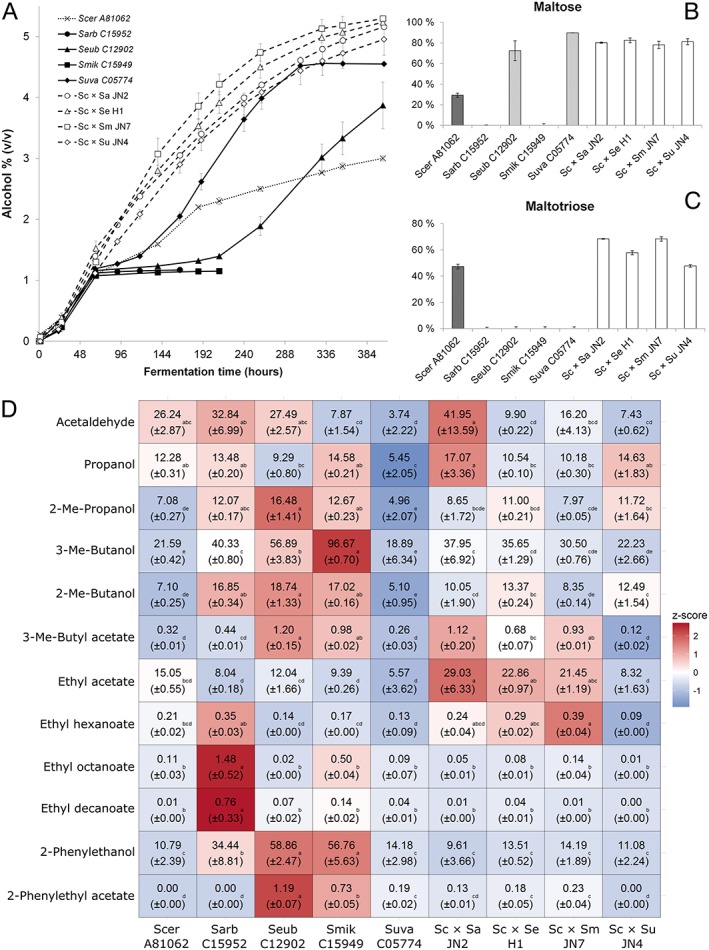Figure 2.

Fermentation potential of alternative hybrids and parental strains and characteristics of beers produced. (A) The alcohol content of the 12°P wort fermented at 12°C with de novo hybrids (open symbols) and parent strains (solid symbols). (B) The maltose and (C) maltotriose utilization (percentage of the concentration in the original wort) of the de novo hybrids (open bars) and their parent strains (grey bars) after fermentation. Values are means from two independent fermentations and error bars where visible represent the standard deviation. (D) Normalized concentrations (mg L−1) of aroma compounds (rows) in the beers fermented with de novo hybrids and parental strains (columns). The heat map was generated based on the z‐scores (blue and red indicate low and high values, respectively). Values are means from two independent fermentations (standard deviation in parentheses) and they have been normalized to an ethanol concentration of 5% (v/v). Different letters in rows indicate significant difference based on one‐way Anova and Tukey's test. Abbreviations: Sa and Sarb, S. arboricola; Sc and Scer, S. cerevisiae; Se and Seub, S. eubayanus; Sm and Smik, S. mikatae; Su and Suva, S. uvarum; and Me, methyl
